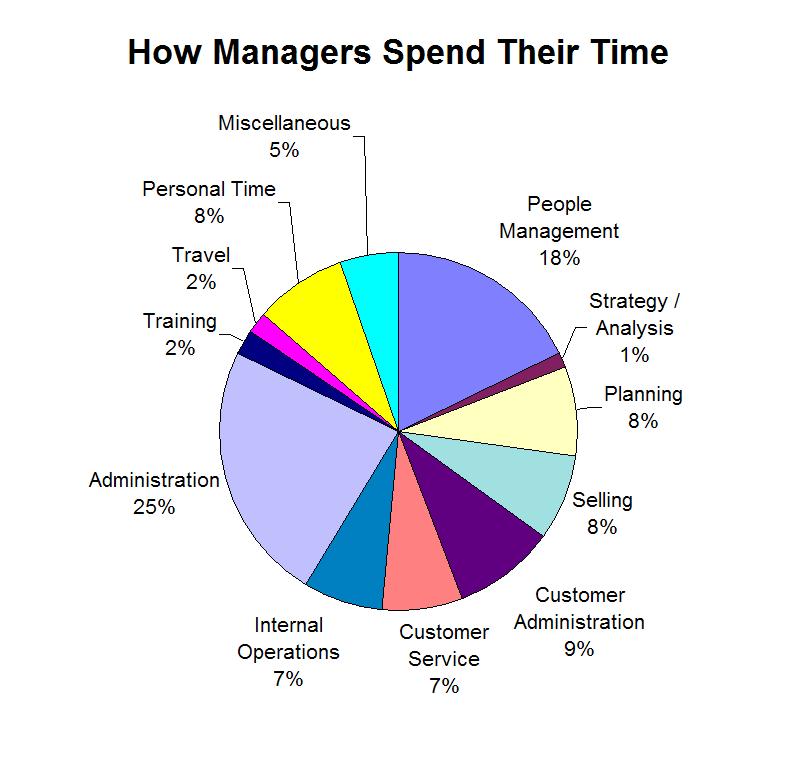There are many ways that managers add value to the companies they work for. Too bad they only do it for three-fifths of the time.
The pie chart below is based on our time and motion studies of 565 different activities measured by managers since 1990. These activities are combined into 12 major categories.
The participants are managers from 38 different job types; sales managers, bank managers, vice presidents, construction supervisors and others. All of them are responsible for managing people.
These managers each tracked about 15-25 activities, corresponding with alphabet letters on our proprietary TimeCorder device. Each manager typically conducted a time and motion study of his or her own time for two weeks. The categories that appear on the pie chart each consist of a number of individual activities.
Ask managers what they do, and they will tell you that they need to be coaching, supervising, managing operations, planning for the long term, etc. These high priority activities fall into the first 7 categories clockwise (people management, strategy / analysis, planning, selling, customer administration, customer service, and operations)
Altogether, these pie segments show that only 59% of a manager’s time is spent on activities that add value. The rest are administrative, internal, travel, training (oneself) travel, personal time and miscellaneous activities. These do not directly add value to the organization.

Companies need to recognize that operating at 100% efficiency or 100% capacity is simply not feasible. Time for long term priorities and daily responsibilities is limited. Numerous “requirements” or burdensome tasks will inevitably eat up time that managers would like to allocate to their priorities.
These job “requirements” are the unwritten or administrative tasks that are a necessary part of being an employee in the organization or that must get done eventually. These include administration, training, travel, personal time and miscellaneous activities. For managers, they can account for up to 41% of the time!
Managers should maximize their productive efforts by first understanding how they allocate their efforts through a time and motion study. Then they should look to improve processes, delegate tasks, automate, and get training on how to maximize productivity.
Following are brief descriptions of the main categories:
- Planning – Activities oriented towards developing new products / services / clients, etc.
- Strategy / analysis – Reviewing business results to aid in planning
- Selling – Direct contact with prospects or customers to obtain additional business
- Customer Administration – Internal activities that support sales and service
- Service – Responding to customer requests or provision of products and services
- Administration – Required internal activities not connected with main priorities
- Internal Operations – Internal work that keeps the organization running
- Training – Personal and professional development done on work time
- Travel – Travel to customers, other offices, but not commuting
- Personal time – Lunch, breaks, calls to spouse, short medical appointments, etc.
- Miscelleneous – Activities not covered elsewhere


0 Comments